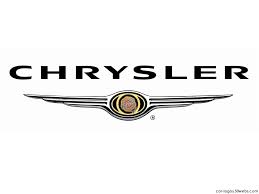Pacifica V6-3.8L VIN L (2005)

Alignment: Service and Repair
STANDARD PROCEDURE - WHEEL ALIGNMENT PRE-WHEEL ALIGNMENT INSPECTION
Before any attempt is made to change or correct the wheel alignment, the following inspection and necessary corrections must be made to ensure
proper alignment.
1. Verify that the fuel tank is full of fuel. If the tank is not full, the reduction in weight will affect the curb height of the vehicle and the alignment
angles.
2. The passenger and luggage compartments of the vehicle should be free of any load that is not factory equipment.
3. Check the tires on the vehicle. All tires must be the same size and in good condition with approximately the same amount of tread wear. Inflate all
the tires to the recommended air pressure.
4. Check the front wheel and tire assemblies for excessive radial runout.
5. Inspect lower ball joints and all steering linkage for looseness, binding, wear or damage. Repair as necessary.
6. Check suspension fasteners for proper torque and retighten as necessary.
7. Inspect all suspension component rubber bushings for signs of wear or deterioration. Replace any faulty bushings or components before aligning
the vehicle.
8. Check the vehicle's curb height to verify it is within specifications.
WHEEL ALIGNMENT SETUP
1. Position the vehicle on an alignment rack.
2. Install all required alignment equipment on the vehicle per the alignment equipment manufacturer's instructions. On this vehicle, a four-wheel
alignment is recommended.
NOTE: Prior to reading the vehicle's alignment readouts, the front and rear of vehicle should be jounced. Induce jounce (rear first, then front) by
grasping the center of the bumper and jouncing each end of vehicle an equal number of times. The bumper should always be released when vehicle
is at the bottom of the jounce cycle.
3. Read the vehicle's current front and rear alignment settings. Compare the vehicle's current alignment settings to the vehicle specifications for
camber, caster and toe-in.
4. If front camber and caster are not within specifications, proceed to CAMBER AND CASTER below. If caster and camber are within
specifications, proceed to TOE which can be found following CAMBER AND CASTER. Rear camber and caster are not adjustable. If found not
to be within specifications, reinspect for damaged suspension or body components and replace as necessary. If rear toe is not within specifications,
adjust rear toe before proceeding to adjust front toe.
CAMBER AND CASTER
Camber and caster settings on this vehicle are determined at the time the vehicle is designed, by the location of the vehicle's suspension components.
This is referred to as NET BUILD. The result is no required adjustment of camber and caster after the vehicle is built or when servicing the
suspension components. Thus, when performing a wheel alignment, caster and camber are not normally considered adjustable angles. Camber and
caster should be checked to ensure they meet vehicle specifications.
If front camber is found not to meet alignment specifications, it can be adjusted using an available camber adjustment bolt package. Before installing a
camber adjustment bolt package on a vehicle found to be outside the specifications, inspect the suspension components for any signs of damage or
bending.
CAUTION: Do not attempt to adjust the vehicles wheel alignment by heating, bending or by performing any other modification to the vehicle's front
suspension components or body.
If front camber readings are not within specifications, use the following procedure to install a camber adjustment bolt package, then adjust front
camber.
CAMBER ADJUSTMENT BOLT PACKAGE INSTALLATION
The camber adjustment bolt package contains 2 flange bolts, 2 cam bolts, 2 dog bone washers, and 4 nuts. This package services both sides of the
vehicle. Use the package to attach the strut clevis bracket to the steering knuckle after the strut clevis bracket has been modified. To install and adjust
the camber adjustment bolt package, follow the procedure below.
1. Raise the vehicle until its tires are not supporting the weight of the vehicle.
2. Remove the front tire and wheel assemblies.
CAUTION: When removing the steering knuckle from the strut clevis bracket, do not put a strain on the brake flex hose. Also, do not let the
weight of the steering knuckle assembly be supported by the brake flex hose when removed from the strut assembly. If necessary use a wire hanger
to support the steering knuckle assembly or if required remove the brake flex hose from the caliper assembly.
CAUTION: The knuckle to strut assembly attaching bolt shanks are serrated and must not be turned during removal. Remove the nuts while
holding the bolts stationary.
